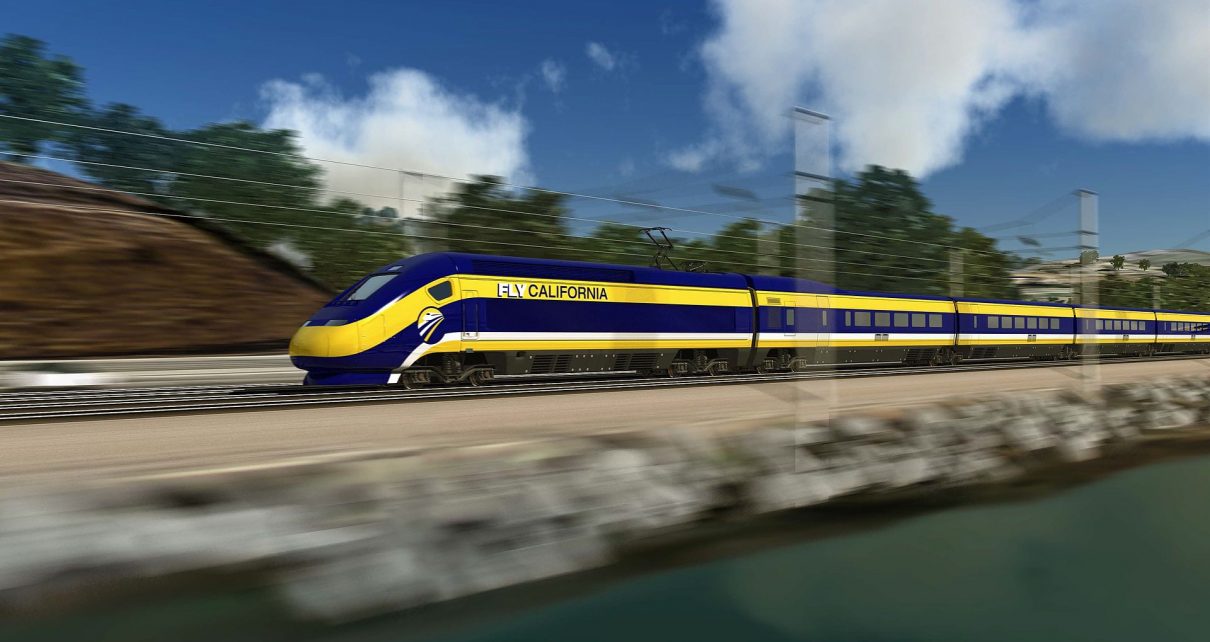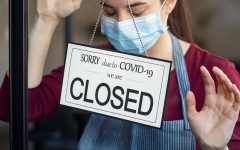
High Speed Rail train, artists rendering. (Photo: CHSRA.ca.gov)
Farebox Recovery: Free is Not Good Enough
It could become so awful that making it free actually lowers ridership
By Thomas Buckley, January 26, 2023 11:10 am
There is not a single public transit system in the United States that earns enough money in fares to cover its expenses.
In fact, the systems with the highest “farebox recovery ratio” – which is the percentage of the annual operations and maintenance budget (not including capital costs like building the systems) that is paid for by people using the service – are actually both here in California: CalTrain and BART.
CalTrain brings in 70 cents for every dollar it spends; BART between 50 and 60 cents.
Again – those are the best “farebox recovery” numbers in the entire country.
Los Angeles Metro covers 11 percent of its budget through fares, Sacramento about 12 percent.
Orange County roughly 16 percent, and San Jose brings in only about 7 percent (San Diego, at 27, and LA’s Metrolink at 34 percent do a bit better.)
Thinking that it’s just California and it’s “car culture” and significant commutes? Nope – Miami is at 9 percent, Chicago at about 15 percent, and even in the progressive bastion that is what remains of Portland, Oregon, the farebox recovery is only 19 percent.
Thinking it’s just a selfish America – with all its freeways – problem? Also incorrect. In our increasingly politically worrisome neighbors to the north – Canada – transit systems do better than here but still max out at about 50 percent farebox recovery. Densely populated, densely bureaucratized, and place transit advocates point to as a model for the future of the United States – Europe – only averages about 60 percent (except for the London Underground which actually earns a pretty tidy profit off of the nearly 1 million people it moves every day.)
It must be noted that most transit systems in Asia actually break even and some, like the London Tube, make money. Services in Taiwan, Singapore, Hong Kong, and most systems in Japan earn a profit.
This brings us to issue of making transit free
The idea of dropping all fares for public transit is becoming a bit more widespread nationally of late, and here in California LA Metro has dusted off the concept for a second look.
The systems – like LA Metro – that are seriously considering moving to free all tend to have very low farebox recovery rates. This makes the argument sound much simpler – if it will only cost 10 percent more, what’s the point in having a fare? Probably costs that much to collect it anyway…
While it is true “10 percent” may not sound like much, in LA Metro’s case that would be at least $200 million a year, money that has to come from somewhere, with that somewhere most likely being new taxes on people who have the temerity to drive their own cars.
But even advocates of eliminating fares as a way to increase usage admit there is a problem, a big stinky problem: the prevalence of the use of trains and buses as rolling flop houses by the homeless.
While the problem already exists and is growing, the elimination of any fare would remove the last barrier to people just simply riding the trains and buses all day to stay off of the streets. This idea terrifies most other riders and is already a top reason people cite when asked why they don’t use public transit, and for good reason:
and this story about “Metro mayhem” from Fox LA.
Citing safety as the primary reason, female Metro ridership has dipped sharply, with women making up about 53 percent of passengers in 2019 and only 44 percent last year.
The idea of making it free to attract more users could in fact have the opposite effect if the system becomes even more overrun with filth and criminal behavior.
In other words, it could become so awful that making it free actually lowers ridership.
Yikes.
- Benefit Fraud Problems and Solutions - November 7, 2024
- A Little Exit Poll - November 5, 2024
- Tomorrow’s Headlines Today! - November 5, 2024





It’d be cheaper to simply pay the Uber / Lyft fare for those who use public transportation than it costs taxpayers to run bus and rail systems. You can look it up.
I have a better idea. Make it pay for itself or stop it altogether. There is no
“right” to free or subsidized bus fare.
And, what do you think the UNIONS would say to that? You’d be killing off an entire sector of UNIONIZED labor. I like the idea, but I doubt it would fly, especially here in the Golden (shower) State.
Democrat policies on not enforcing current laws against vagrancy and criminal behavior have made riding public transit scary and dangerous. As Mr. Buckley noted, making riding public transit free will only make it worse.
The BART system and the LA Red and Blue Lines add more indirectly to the economy than they cost the taxpayer – similar to the State Water Project. It’s not enough to look at the farebox recovery ratio – throw a little public money at these systems and they make sense. I’m tired of seeing CAHSR being a whipping boy – it makes so much sense and will dramatically transform the state. Compare that to Interstate 69 – a boondoggle that has been going on for decades and ten times worse than any of the missteps of CAHSR. Sorry, I just like trains.
Back up your first sentence with data.
Your last sentence is the only thing that made sense.
And what percent of highways make back their money in tolls? None. Yet we accept the necessity of highways and fund them through taxes. It’s so backwards. No one has a right to free highways or parking spots but we do have a right to trains and public transit.
Those who continue to drive *should* pay for the state’s transit upgrades. They are destroying the planet and should pay for it.